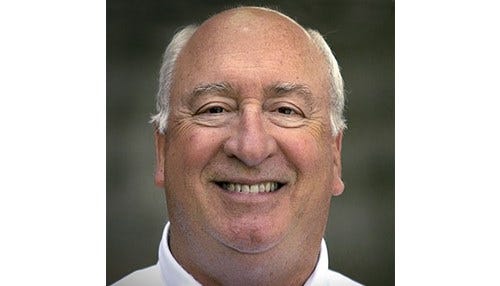Whose CV is it Anyway?

Subscriber Benefit
As a subscriber you can listen to articles at work, in the car, or while you work out. Subscribe NowPersonal branding has been the source of much discussion in marketing for several years now. I get it. A great individual CV can dramatically enhance an individual’s professional reputation and with it, his or her credibility in acquiring new business. With the advent of social media, building a personal brand has become easier than ever before. If a rising tide lifts all boats, a rainmaker’s success floats the boats of everyone in the firm. Right?
I’m not so sure.
I believe the firm’s CV is significantly more important than the individual practitioner’s. Seth Godin famously defined a brand as “the set of expectations, memories, stories and relationships that, taken together, account for a consumer’s decision to choose one product or service over another.” Based on that definition, I don’t believe that building up an individual’s personal brand necessarily translates to creating overall brand value for the firm. In some ways, it may actually diminish the company’s brand because the potential client is no longer choosing the firm; he or she is effectively hiring a specific practitioner. As such, should that individual leave the organization, the chances of the firm retaining the business may be diminished dramatically.
Let’s face it. The motivation of many of the strongest proponents of personal branding is based on enhancing their personal marketability. If they can leverage that status to help their employer grow, that’s great and they will often benefit financially or otherwise from that success. But at the risk of being cynical, I suspect that these individuals are often looking to increase their own value on the open market and highly inclined to jump ship or move on to greener pastures when the opportunity presents itself.
For that reason, I believe professional services firms and personal service businesses should think in terms of aggregating their collective strengths. It’s not about stifling the unique skills and talents that make the members of your team unique. Rather, you should highlight how each individual brings their talents to the table to create overall brand value for your firm. Marketing should focus more on the shared values of the organization, leveraging the experiences and capabilities of the firm as a whole rather than trying to make superstars out of individual team members. That’s not to say, there isn’t a time and place for recognizing valuable accomplishments – or for highlighting specific capabilities of an individual as a means of developing a particular service line or to win one specific piece of business. But as much as possible, that should be done in the context of overall team success.
If we use team sports as an analogy, championship teams are typically composed of multiple players whose talents complement one another. It is the classic case of the sum being greater than the individual parts. Again, this is not to suggest that a team can’t have a superstar, but he or she better be surrounded by a strong supporting cast of team members who complement the skills of the star. The Chicago Bulls did not achieve their championship status during the early years of Michael Jordan’s career. It was not until other critical team members were added to the mix that the team started its string of NBA championships. Jordan was the star and the face of the Bulls brand, but it was only the combined skills of Scotty Pippen, Steve Kerr, Toni Kukoc, Dennis Rodman, etc. that enabled the Bulls brand to achieve the pinnacle of success (not to mention the contributions of a certain brand name coach, Phil Jackson).
Personal branding has other potential pitfalls for the organization. Continuing the sports analogy, Lance Armstrong was the poster child for personal branding on behalf of the Livestrong brand. To be sure, Armstrong could be viewed as more of a celebrity spokesperson than official representative of the brand, but in reality that is exactly what he was. He was Livestrong’s founder and number one employee. His fall from grace with the doping scandal in 2013 devalued the brand immeasurably.
At the end of the day, an organization’s brand is only as strong as the collective skills of the team. By putting too much focus on its top performers, the firm invites a serious reduction in brand (and real) value if one of those superstars moves on to greener pastures. Conversely, when the skills and reputation of the firm’s practitioners are aggregated, the value of the brand is enhanced.
Thom Villing is chief executive officer of Villing and Co.
